Which cutlery should you use at your restaurant?
You need new cutlery for your restaurant, but the wrong choice means dealing with rust, bent forks, and a damaged brand image. A poor investment can cost you dearly.
The best restaurant cutlery depends on your concept. Fine dining requires heavy, 18/10 stainless steel. Casual spots can use durable 18/8 steel or stylish PVD-coated sets. The choice must balance your brand's aesthetic, operational durability, and budget for long-term value.
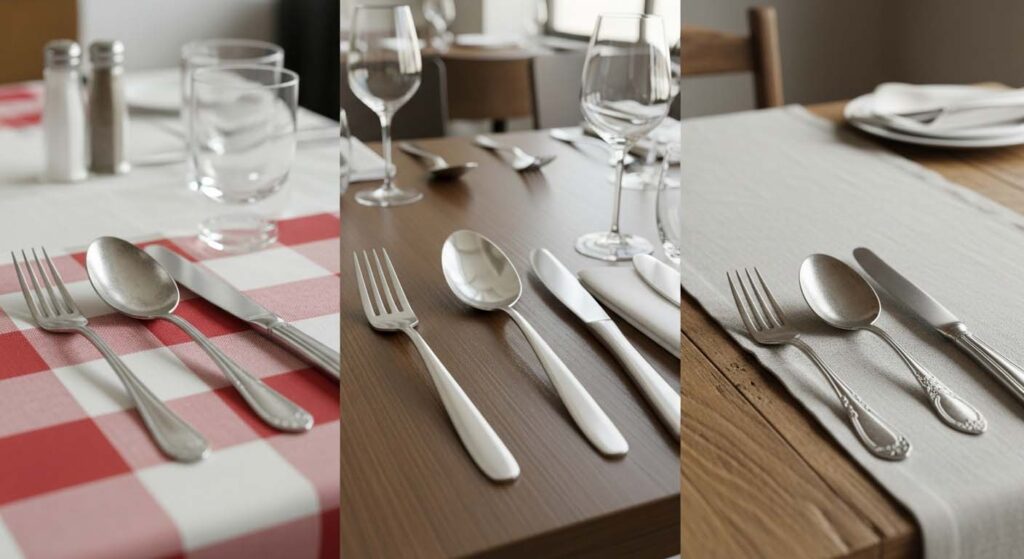
I often talk with experienced buyers like Jacky. He was setting up a new high-end steakhouse and was stuck between a classic polished set and a very modern matte black one. He called me, saying, "Linc, the food is premium, the decor is modern-classic. The cutlery has to feel right. What tells the right story?" His question gets right to the point. Your cutlery is a huge part of your restaurant's story. It's not just a tool for eating; it is a statement about your brand that customers can feel in their hands.
What Are the Main Types of Restaurant Cutlery?
You see terms like "18/10" and "PVD" but are not sure what they mean. Choosing blindly leads to costly mistakes when the sets you buy fail after just a few months.
The main types are defined by their base material and surface finish. 18/10 stainless steel is the premium standard. 18/8 is a durable workhorse. Modern finishes include PVD coatings (black, gold) and rustic stonewashed looks for added style.
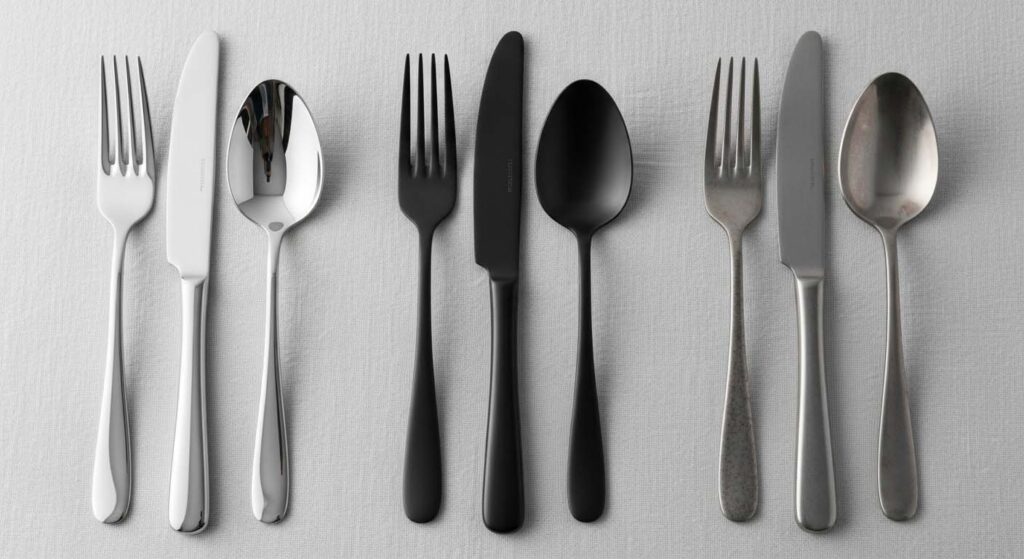
Let's break down the language. The foundation is always stainless steel, and the numbers are important. "18/10" means the steel is made with 18% chromium for rust protection and 10% nickel for a brilliant shine and extra durability against corrosion. This is the top-grade material for fine dining. "18/8" has less nickel but is still a very strong, reliable choice for high-volume casual restaurants. I always tell my clients to avoid "18/0" steel, as it has no nickel and rusts very easily in commercial dishwashers. On top of this steel base, you have the finish. PVD coating is a modern process that applies a super-hard ceramic layer to create those stunning black or gold colors. Stonewashing tumbles the cutlery with small stones to create a matte, non-reflective finish that hides fingerprints and wear very well.
| Type | Best For | Key Feature |
|---|---|---|
| 18/10 Stainless Steel1 | Fine Dining, Hotels | Maximum corrosion resistance and premium feel. |
| 18/8 Stainless Steel | Casual, High-Volume | Excellent durability and the industry standard. |
| PVD Coated2 | Modern, Trendy | Striking colors with a very durable finish. |
| Stonewashed | Rustic, Industrial | Hides scratches and has a unique texture. |
How Does Your Cutlery Choice Affect Your Restaurant's Brand?
You've spent a fortune on your decor and menu. But using generic cutlery can make your whole concept feel cheap and unfinished, undoing all your hard work.
Your cutlery is a direct physical message about your brand's value. A heavy, elegant fork tells a story of quality. A unique, stylish set reinforces a trendy theme. A mismatch creates a negative feeling that customers notice instantly.
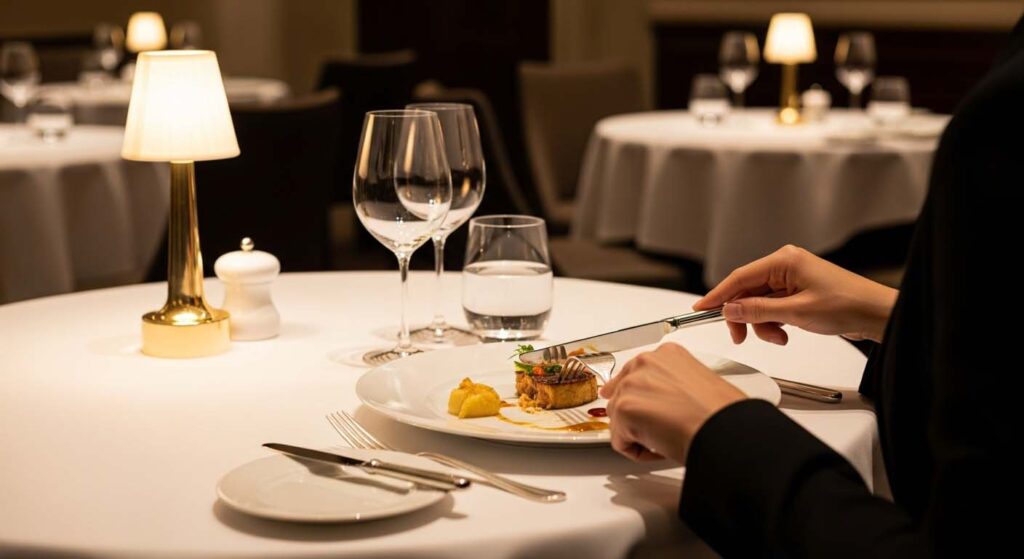
Think about your customer's experience. They hold the cutlery in their hands before the main course even arrives. It is their very first physical interaction with your promise of quality. For Jacky's steakhouse, this was the key issue. His restaurant had classic dark wood but also modern lighting. A fancy, old-fashioned set would look out of place, but a cheap, plain set would feel insulting next to an expensive steak. We decided on a heavyweight, forged set with a simple, clean shape and a soft brushed finish. It felt modern because of its simplicity but classic because of its substance. It told the right story. Your cutlery does the same job. A farm-to-table restaurant with a stonewashed set feels authentic. A cool city bistro with matte black forks feels intentional and stylish. It is a silent cue that supports the story you tell with your food and your space.
What Is the Real Difference Between Cheap and Expensive Restaurant Cutlery?
You see cheap cutlery online and the low price is tempting. But you have a sinking feeling there's a catch, and you dread dealing with rust, bent forks, and constant reordering.
The real difference is longevity and the total cost of ownership. Expensive cutlery uses superior 18/10 steel and better manufacturing, so it lasts for years. Cheap cutlery, usually made of 18/0 steel, rusts and bends quickly, leading to higher replacement costs.
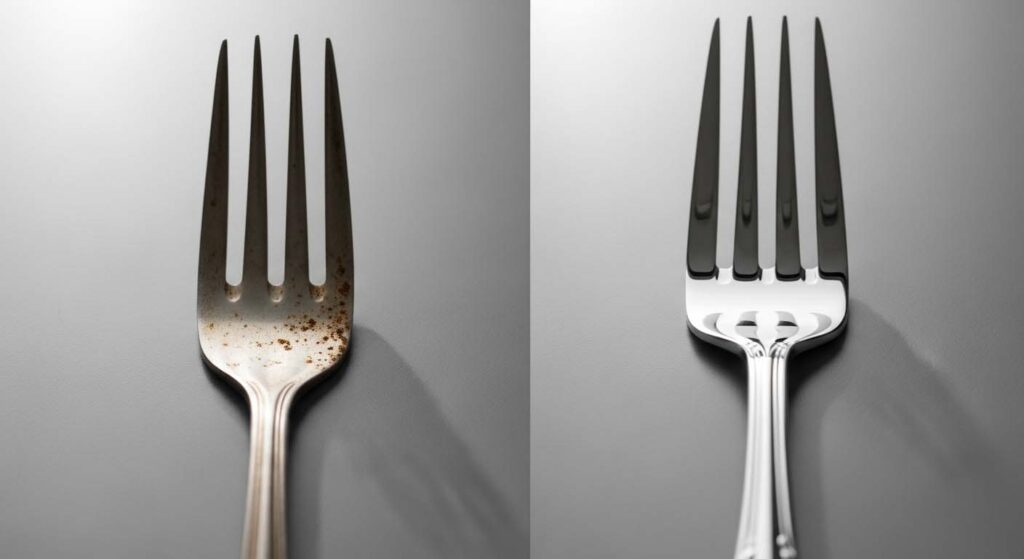
As a manufacturer, I can tell you exactly where the cost comes from. It is not just about the design. The biggest difference is the raw material. Using high-quality 18/10 stainless steel with nickel costs more than using basic 18/0 steel without nickel. The second factor is the manufacturing process. A forged knife, shaped from a single solid bar of steel, requires more steps, energy, and skill than a simple stamped one cut from a sheet. You should think about the total cost over time. A cheap fork might cost $0.50 but you will replace it in 6 months. A quality fork might cost $2.00 but it will last 5 years. Over that time, the "cheap" fork actually costs you $5.00, more than double the price of the quality one. And that doesn't even count the hidden costs of a damaged reputation or the staff time spent throwing away bad pieces.
What Are the Best Practices for Caring for Your Restaurant Cutlery?
You have invested in beautiful new cutlery. Now you are worried that your busy staff and harsh commercial dishwasher will ruin it in a few months, completely wasting your money.
To protect your investment, rinse cutlery to remove food acid, wash it in vertical racks to prevent scratches, and use a non-citrus detergent. Ensure a final hot rinse and complete drying cycle to prevent water spots, especially on darker finishes.
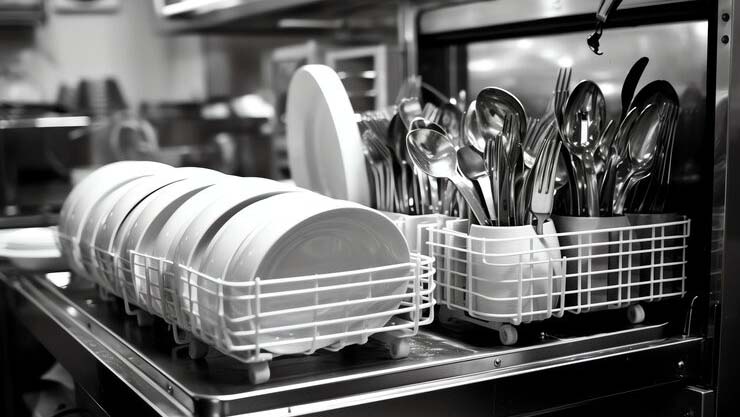
Even the best cutlery can be ruined by poor handling procedures. In a busy restaurant, the dishwasher is the biggest danger zone. Here are the simple rules I give to all my restaurant clients. First, pre-soak or rinse your cutlery as soon as you can, especially if it has acidic foods like salad dressing or tomato sauce on it. This stops corrosion before it starts. Second, use vertical washing racks. When you just dump cutlery into a horizontal basket, the pieces rub and scratch each other during the entire wash cycle. Vertical racks keep them safe and separate. Third, use the right soap. Avoid harsh detergents with chlorine, citrus, or rough particles. A simple, professional-grade detergent is always best. Finally, make sure everything gets completely dry. Water spots are just mineral deposits left behind when water evaporates slowly. A hot final rinse helps water slide off, and a full drying cycle prevents spots from forming.
Conclusion
Choosing restaurant cutlery is a balance of brand, durability, and budget. Select a set that tells your story and invest in a quality product that will last for years.
